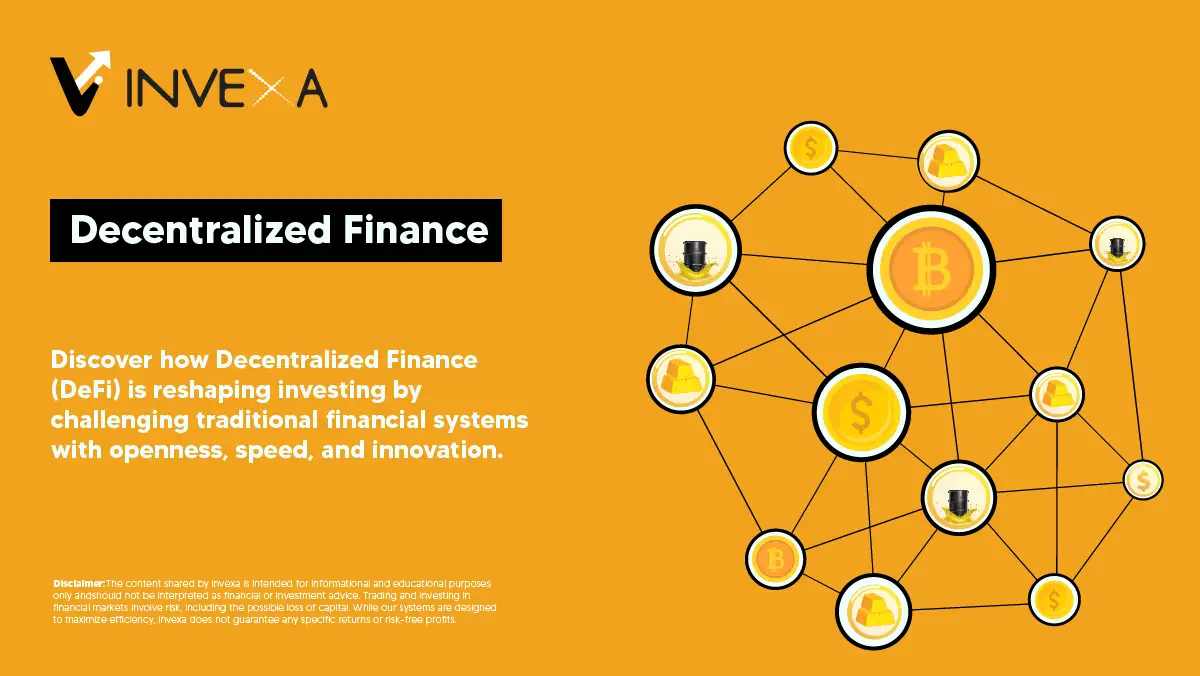
Unlock the world of Decentralized Finance (DeFi) with our easy to understand guide. Learn what DeFi is how it's built on blockchain and explore its significant impact on traditional investing from new opportunities to increased competition.

The world of finance is constantly evolving and a new term has been buzzing around lately: Decentralized Finance or DeFi. But what exactly is it and why should anyone involved in traditional investing care? Let's break it down in a way that's easy to understand.
Imagine a financial system without central authorities. That's the core idea behind DeFi. Instead of banks exchanges and other traditional institutions controlling our money and financial interactions, DeFi aims to create an open permissionless and transparent financial ecosystem built on blockchain technology the same technology that powers cryptocurrencies like Bitcoin.
Decentralization: No single entity has control. Operations are distributed across a network of computers.
Transparency: Most activities on public blockchains are recorded and viewable by anyone fostering greater accountability.
Permissionless Access: Anyone with an internet connection and a compatible wallet can participate regardless of their location or financial status.
Composability: DeFi applications (often called "dApps") are designed to work together like building blocks allowing for innovative and complex financial products.
DeFi is rapidly developing but some of its core functionalities include:
Decentralized Exchanges (DEXs): Platforms that allow users to trade cryptocurrencies directly with each other without relying on a central intermediary.
Lending and Borrowing: Protocols that enable users to lend out their digital assets to earn interest or borrow assets by providing collateral all without traditional banks.
Yield Farming and Staking: Methods to earn rewards on your cryptocurrency holdings by participating in the network's operations.
Decentralized Insurance: Emerging projects aiming to provide insurance against various risks within the DeFi ecosystem.
Stablecoins: Cryptocurrencies designed to maintain a stable value often pegged to a fiat currency like the US dollar facilitating easier transactions and lending.
While DeFi might seem like a separate world its influence on traditional investing is becoming increasingly significant:
Increased Competition: DeFi offers alternative financial services that can potentially compete with traditional banking and investment products putting pressure on incumbents to innovate and reduce fees.
Technological Inspiration: The underlying blockchain technology and the innovative financial instruments being developed in DeFi can inspire new solutions and efficiencies within traditional finance.
New Asset Classes: As the DeFi space matures it could lead to the emergence of new asset classes that might eventually be integrated into traditional investment portfolios.
Potential for Higher Yields (with Higher Risk): DeFi can sometimes offer significantly higher returns compared to traditional savings accounts or fixed income investments although this often comes with increased risks like smart contract vulnerabilities and regulatory uncertainty.
Demand for Digital Literacy: The rise of DeFi is highlighting the importance of understanding digital assets and blockchain technology which will become increasingly relevant for all investors.
Decentralized Finance is not just a fleeting trend. It represents a fundamental shift towards a more open and potentially more equitable financial system. While it's still in its early stages and carries its own set of risks understanding the principles and developments within DeFi is crucial for anyone involved in traditional investing. It offers valuable insights into the future of finance and the potential for disruption and innovation across the entire financial landscape. Keep an eye on this space it's likely to shape the way we interact with money and investments for years to come.